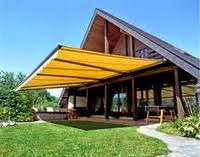How it works: the process by Seat Cover Manufacturers in Bangalore
How it works: the process by Seat Cover Manufacturers in Bangalore
Ever wondered how the Seat Cover Manufacturers in Bangalore used by Saddles Inc is manufactured? Hand-selected animal hide from various regions across the world are subject to rigorous and meticulous treatment and curing processes to ensure that the finished product is world class. The entire methodology is designed to alter the biological properties of the skin itself which I turn makes it highly resistant to wear and tear and natural decay.

Hides arrive at the tannery and are stored in warehouse. They are packed in rock salt for preservation, stored for up to 30 days. When ready to be processed, desalting removes salt from the hides by tumbling and propelling the hides forward with a series of pegs. The skins are then placed in soaking drums for one to two days to re-hydrate and remove dirt, salt, and some soluble proteins. At this point the excess hair and dirt is also removed and washed away.
Tanning
Primary tanning converts per-tanned hides into Seat Cover Manufacturers in Bangalore by preserving and halting the decomposition of the hide. There are three types of tanning commonly practices around the world. Vegetable tonnages are the conversion of rawhide into leather with vegetable tanning agents. The most commonly used vegetable materials are mimosa, chestnut, and bark. Chromium tanager is a synthetic tanager. Seat Cover tanned with chromium salts provides a soft, mellow suppleness of hand. Combination tonnages is a combination of chromium and vegetable tanning together resulting in a full bodied, soft and supple leather.
Retaining
Retaining is then completed to modify the physical characteristics of the leather to suit its final use. Seat Cover Manufacturers in Bangalore is re-tanned with chromium salts, vegetable matter, or a combination of the two, giving it a unique texture
Dyeing
Dyeing adds colour to the Seat Cover Manufacturers in Bangalore. Tanneries are equipped with an assortment of dyes to colour Seat Cover in a variety of neutrals to bright, saturated hues. The recipe for dyeing is formulated by computer to ensure colour accuracy and consistency. The process is however lengthy and usually takes more than 8-10 hours for it to complete entirely. The hides are staked for softness after dyeing and vaporised to re-moisturise.
Finishing & Final Inspection
The last stage of the entire process of Seat Cover Manufacturers in Bangalore is of course the finishing. Here, the treated hides are subject to quality control, smoothing and softening, preservation and cosmetic modifications to ensure that the product reaches the superior standards that are mandated by Saddles Inc. A variety of tests are also done to ensure high quality control. These tests include colour, abrasion, fading, and dimensional stability. Once a hide has been tested, it is inspected to ensure it meets all of the intended quality specifications.



Comments
Post a Comment